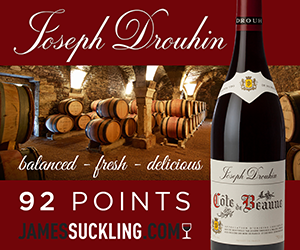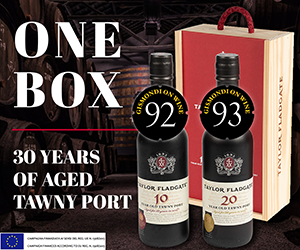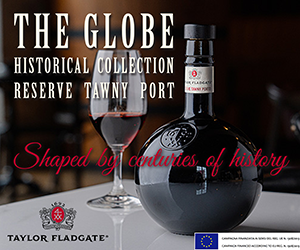At the southern end of the Rhone River, to its west just before it flows into the Mediterranean, lies a large wine-producing region called the Costières de Nîmes.
It's one of a handful of appellations spearheading resurgent consumer interest in good-value French wines.
According to British author Rosemary George, whose fascination with France and French country wines has resulted in two excellent books, "Administratively, the appellation lies within the valley of the Rhône, but culturally it has much more in common with the Languedoc."
That's a reference to the immense area farther west and south that in the last decade is producing table wines of increasing quality. (If you want to read more, George's latest is The Wines of the South of France: From Banyuls to Bellet, published by Faber and Faber at $42.)
However you locate it, the carefully delimited appellation covers an amazing 24 villages and 24,000 hectares, of which half is devoted to vines -- more than double the planted area of the entire B.C. industry.
The Costières de Nîmes was first recognized as a producer of VDQS wines (vins délimités de qualité supérieure) in 1951, although old-time imbibers would have known it as Costières du Gard. In 1986 it was elevated to appellation status, and in 1989, to avoid any confusion with Vin de Pays du Gard, the name was changed to Costières de Nîmes.
Its vineyards are defined by an especially stony soil mix of gravel and large pebbles that locals call grès, which was brought down from the Alps by the Rhône. Although grès appears nowhere else in the Rhône or the Languedoc, George says that to her inexperienced eye "it does not seem dissimilar to the galets [large round stones] of Châteauneuf-du-Pape."
The rocks, weighing up to half a kilogram, lie over a layer of moisture-retaining clay that feeds the vines throughout the hot summer. Current regulations demand minimum grape percentages in the vineyard, although the winemaker is free to choose his or her own mix of grapes for the bottle. For the record, vineyard plantings must be at least 25 per cent grenache noir, 20 per cent syrah, and 40 per cent carignan. Added to those are small amounts of mourvèdre and cinsault.
Bottles from the appellation are embossed with a crocodile under a palm tree -- emblem of the ancient city of Nîmes. When the Romans returned from Egypt, many settled in Nîmes, where they were allowed to mint their own money with the head of Caesar on one side and the crocodile and palm tree on the other.
Today we look at a series of Costières de Nîmes reds and, for fun, a lone white from the region.
Thierry and Guy Fat Bastard Chardonnay 2001 is included because I wanted to offer a white wine, and the fruit comes from the nearby hills, north of Nîmes. This one is fresh, with a tropical melon nose and plenty of vanilla. The aroma is Oz-like, with French restraint in the taste. So far our government retailer has rejected the idea of selling this label (or Fat Bastard Shiraz) in its stores, so look for the sassy labels in private outlets.
Mas Aupellière 1998 is an 80-20 blend of syrah and grenache -- hand-picked fruit from 40-year-old vines, where yields are appealingly low. The texture is round and smooth; the fruit spicy and savoury. This is great value, and perfect for use around the barbecue. I love the touch of bottle maturity.
The Château de Belle-Coste 2000 shows exuberant youthful aromas of cherries and black fruit. It's round on entry, with a young, fiery, spicy mid-palate, and slightly dry tannin in the finish. Already solid value, this will continue to improve in the bottle over the next year or two.
This was my second tasting of Château de Mas Neuf 2000, and it's getting better -- lovely soft, ripe, round earthy/peppery fruit flavours slide down effortlessly. This fine mid-week red would be great with soft cheeses.
Château de Campuget is the largest estate in the appellation and has been run by Dalle family since 1942. Most of the production is red, and the blend is predominantly syrah and grenache noir with a little carignan. The 2000 is charming and smooth textured, with medium intensity and flavour. It's pleasant, stylish and well worth the money.
The Château de Rozier is changing vintages in government stores, so instead of the 1998, you may find the more youthful 2000. The grape mix is carignan, grenache noir and syrah, and the nose is a mix of smoky dried crushed leaves and cream. It's big and rich on the palate, with soft, peppery/jammy fruit.
Vancouver Sun wine columnist Anthony Gismondi is also co-host of The Best of Food and Wine, which airs at noon each Saturday on CFUN 1410 AM.
Weekend Wine Tasting: COSTIERES DE NIMES, FRANCE
Wine: Thierry and Guy Fat Bastard Chardonnay 2001
Price: $16.95
Stock No.: 563130
Score: 14.5/20 (private retailers only)
Comments: Fresh melons and vanilla.
Wine: Mas Aupellière 1998
Price: $12.95
Stock No.: 608877
Score: 14.5/20
Comments: Round, spicy; good value.
Wine: Château de Belle-Coste 2000
Price: $12.50
Stock No.: 612101
Score: 14/20
Comments: Young, spicy, warm-blooded red.
Wine: Didier Absil -- Château de Mas Neuf 2000
Price: $14.50
Stock No.: 615948
Score: 15/20
Comments: Round, soft, easy-drinking.
Wine: Château de Campuget 2000
Price: $12.95
Stock No.: 571059
Score: 14/20
Comments: Solid sipper for the price.
Wine: Château de Rozier 1998
Price: $18.95
Stock No.: 524975
Score: 14.5/20
Comments: Soft, jammy, peppery fruit.
Written By: ag

 quicksearch
quicksearch





